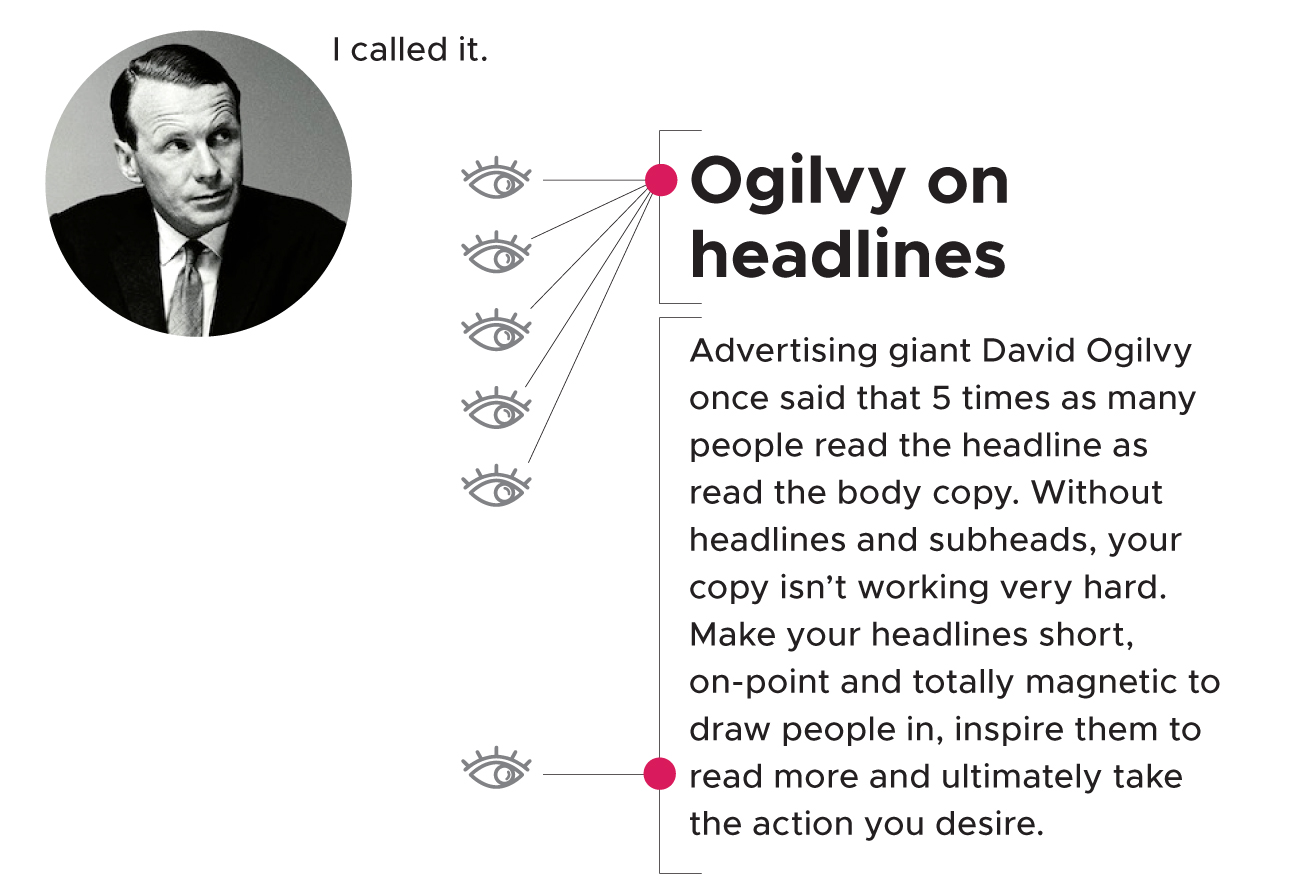
E-Commerce Content: Put Words to Work for You
Once upon a time (and not that long ago), if you wanted to buy a product or service, you actually had to leave the house. But today, e-commerce lets you shop online—in your pjs, direct from your couch. Chances are, your current shopping “trips” no longer involve going to an actual building, speaking to an actual person or even exchanging actual money.
Although e-commerce has dramatically simplified the shopping experience for consumers, it has required businesses to become more adept at describing every product or service for sale.
In my 20+ years of copywriting, I’ve watched e-commerce evolve. And if I’ve learned one thing about e-commerce, it’s that selling online is no longer a matter of simply posting a product photo and writing a few sentences of copy. Today’s online shoppers demand more informational content than ever before, and they want it delivered fast, easily, and in the most understandable/relatable ways.
Stellar content helps maximize e-commerce success
While a picture may be worth a thousand words, actual words on your website help your consumers make the most informed buying decisions. When you give customers access to all the info they need for their online shopping experiences, they’ll be happier overall, make fewer returns, and be much more likely to return to you for future purchases.
Tips from a copywriter to help create outstanding e-commerce content
Know your audience
Before I write copy for any project, I ask myself who I should be talking to. If you’re not asking yourself this same question—and fully understanding who will benefit most from your product or service—your messaging will likely miss the mark. Similarly, you should understand exactly who’s buying from you now and why.
Knowing your specific audience/ideal buyer lets you craft messaging that targets his or her EXACT needs. To best gain an accurate understanding of your audience, you must research their expectations, desires and perceptions. And once you’ve determined your target audience, you must periodically re-evaluate their needs to keep your messaging on point. Vendi’s extensive in-house qualitative and quantitative research capabilities can simplify the entire research process for you, ensuring that your message consistently reaches the perfect people.
Know your brand voice
How do you want to come across in your messaging? Will you be the definitive industry expert? Will you be witty or funny?
Before writing even a sentence, I make sure I understand the client’s desired voice—whether it’s “Just the facts, ma’am” or “Make ‘em laugh!” You, too, must decide on the tone for the copy/content that will span your entire online presence. While your e-commerce voice will likely relate to your product or service offering, it will also need to convey your brand image and standing in the marketplace. Your online tone must also relate to your audience’s needs and expectations.
Answer the 5 Ws
Who? What? When? Where? Why? (And don’t forget How?) When writing e-commerce copy, I make sure these basic questions have clear answers. You must do the same, since your readers need these nitty-gritty details to best understand how you will help improve their world. Just be sure to keep your answers as brief and scannable as possible; in today’s short-attention-span world, online readers will quickly lose interest in overly long copy. Whenever possible, break up copy with bulleted lists or subheads so readers can easily keep their place and return to relevant sections/points as necessary.
Clearly communicate benefits (not just features)
Regardless of what you’re selling, your customers and prospects simply want to know “What’s in it for me?” Your job is to tell them how you’ll help, and in a manner they’ll understand completely.
If, for example, I’m writing about a top-selling riding lawnmower that includes cup holders, I wouldn’t simply say “Includes cup holders.” Instead, I would indicate how those cup holders improve a potentially tedious lawn-mowing experience, with copy such as “Molded-in cup holders keep your favorite beverage handy and ready to refresh you at every turn.” Readers must quickly recognize how your product or service benefits them, or they’ll seek a better-explained alternative and you’ll lose sales.
Use simple, direct language
Whether you’re writing for high-school seniors or rocket scientists, you must use relatable, understandable language. This ties directly into knowing your audience—when you know your audience, you can use terminology they appreciate. In writing for EVERY audience, I follow these simple language guidelines:
- Short sentences are easier to read and more digestible
- Active voice prevents “clunky” sentence structure
- Jargon, exaggeration and superlatives that can’t be backed with proof can make you seem phony
- Verbs are extremely valuable in motivating your readers to take action
- Too many adjectives can make your copy seem “flowery” and insincere
Above all, remember that readers want authenticity – they never want to wonder whether you’re hiding something, and will likely avoid doing business with you if they think you are.
Just say NO to spelling and grammar errors
Simply put, spelling and grammar errors make you look incompetent. Even the simplest error can make readers question your abilities and intent. Your customers and prospects want to work with an organization that’s smart about EVERYTHING they do, and your online presence should make them realize you’re smart from the start.
Whenever possible, I enlist the assistance of a proofreader to help minimize spelling and grammar errors. I highly recommend that anyone writing e-commerce content (or any copy, for that matter) work with a proofer to create accurate, correct and readable copy.
ALWAYS use headlines
When you read, what grabs your eye? For most people, it’s the headline. Compelling, magnetic headlines are key to successful e-commerce copy. Renowned advertising copywriter David Ogilvy once said “On the average, five times as many people read the headline as read the body copy. When you have written your headline, you have spent 80 cents out of your dollar.” As a writer and prolific reader, I couldn’t agree more. Headlines are especially relevant and important in today’s busy, short-attention-span society in which consumers are perpetually bombarded with content. A smartly written headline grabs readers’ attention, motivates them to dive into your copy and ultimately drives the action you desire.
Engage your audience’s collective imagination
For all its success, online shopping has one big downside—customers and prospects cannot touch or interact directly with your offering(s). Therefore, your e-commerce content should clearly tell a story or paint a mental picture for every reader.
In writing for e-commerce, I strive to make the reader clearly visualize how a product or service will improve his or her daily life. Rather than simply saying “This lounge chair makes beach time great,” I’ll describe circumstances likely to make the reader “feel” the product, such as “It’s Sunday afternoon and you’re lounging in style. The sea breeze ruffles your hair, the sun warms your shoulders, and the sand between your toes makes you smile.” In addition to being much more engaging, this more relatable, impactful description is more likely to generate a sale.
Make your audience feel smart just for considering you
Regardless of your subject matter, your e-commerce content should make readers feel good just for looking into what you have to offer. I always try to convey a sense of exclusivity in my copy that makes readers want to tell others why a particular client is the best at what they do. For example, in describing a healthcare organization, I would write, “Preventive care from our expert practitioners is a true investment into your long-term health and happiness” rather than “Our doctors can help you feel better.”
In addition to an element of exclusivity, your e-commerce content should include messages of affordability and urgency, two important characteristics proven to motivate readers to act.
Be transparent
Your e-commerce content must tell your readers exactly what they need to know AND exactly what you want them to do. Today’s consumers are savvier than ever before, especially when it comes to e-commerce, and they won’t work with a company or organization that makes their online experience difficult, confusing or unclear.
I’ve yet to encounter a client who doesn’t have “fine print” associated with their products or services—things like shipping info/rates, preferred payment methods and a specific return policy. Although this information is neither glamorous nor exciting, I make sure that every necessary detail appears somewhere in my e-commerce copy, because readers expect (and deserve) full disclosure. Essentially, readers do not want unexpected surprises.
I also make sure to include a clear call to action (CTA) in every piece of e-commerce copy. Readers want to know exactly what to do next, whether it’s “Click here for more information,” “Shop now,” or “Enroll today.” A clearly worded CTA also helps move the reader easily through the buying process, which ultimately leads to actual sales.
Let your existing customers sell for you
Today’s consumers, millennials especially, are heavily influenced by their peers’ buying decisions. They want authentic information that helps them best understand how people are using or engaging with a product or service before making a decision themselves.
I wholeheartedly recommend including customer testimonials and other user-generated content in e-commerce copy. The internet has made sharing opinions through reviews and testimonials easier than ever; this content already exists, and you should use it to your full advantage! Customer testimonials help prospects clearly understand your past success, your dedication to customer care, the appeal of your product or service and the role your offering(s) can play in their unique situation. Let your existing customers show prospective customers just how valuable (and amazing) you are!
Make your e-commerce content ‘internet-friendly’
When creating your e-commerce content, keep the medium in mind. Optimize your copy for search engines with plentiful natural keywords so your audience can find you in their natural searches. Use friendly, familiar terms and keywords that will also help your readers feel comfortable with you and your organization overall. For example, when writing about tools to pick up dog poop, I used (decidedly unglamorous) common keywords like “dog poop” and “pooper scooper” in my copy, rather than words like “dog waste pickup” or “dog feces,” because I knew readers would search using the more common terms.
Also, when creating content for your e-commerce endeavors, don’t simply cut/paste existing copy from another online source and use it as your own. In addition to being unethical, doing so will hurt your ranking in search results. The Google search engine has become “smart” enough to recognize duplicate content in search results, and your duplicate content will appear lower in results than would original content. Plus, your audience will respond much more favorably to YOUR engaging, original content.
Does your e-commerce content work as hard as it could?
Effective e-commerce content results from a perfect blend of thorough research, careful planning, strategic thinking and expert execution. Wondering whether your online content—or your online presence as a whole—truly meets your needs and brings you the success and profitability you deserve? Use the e-commerce content/copy guidelines detailed above to better align your online content with your business goals. And feel free to rely on the content experts at Vendi for a fresh approach to telling your story and connecting with more of the exact consumers who can benefit from your business.



